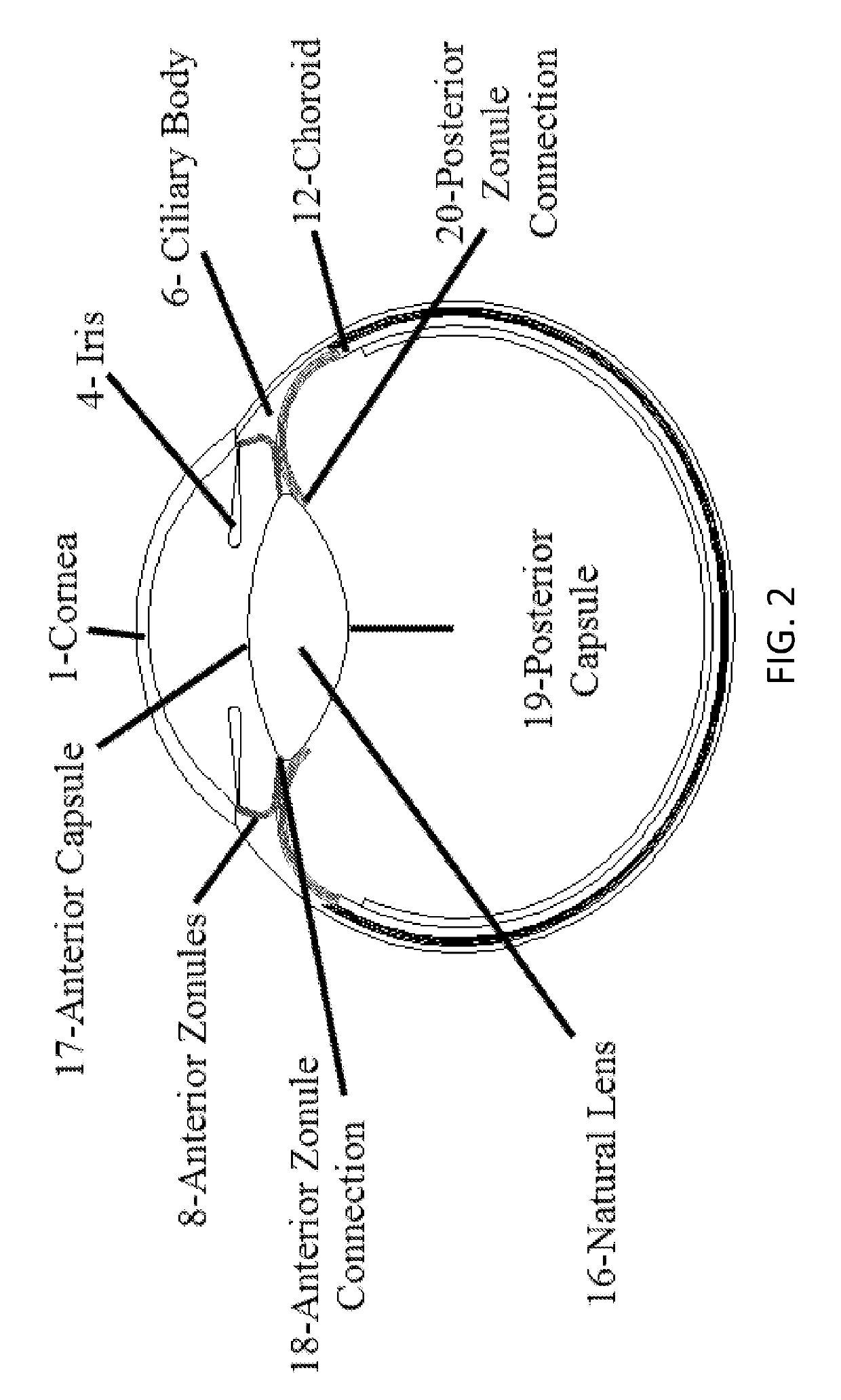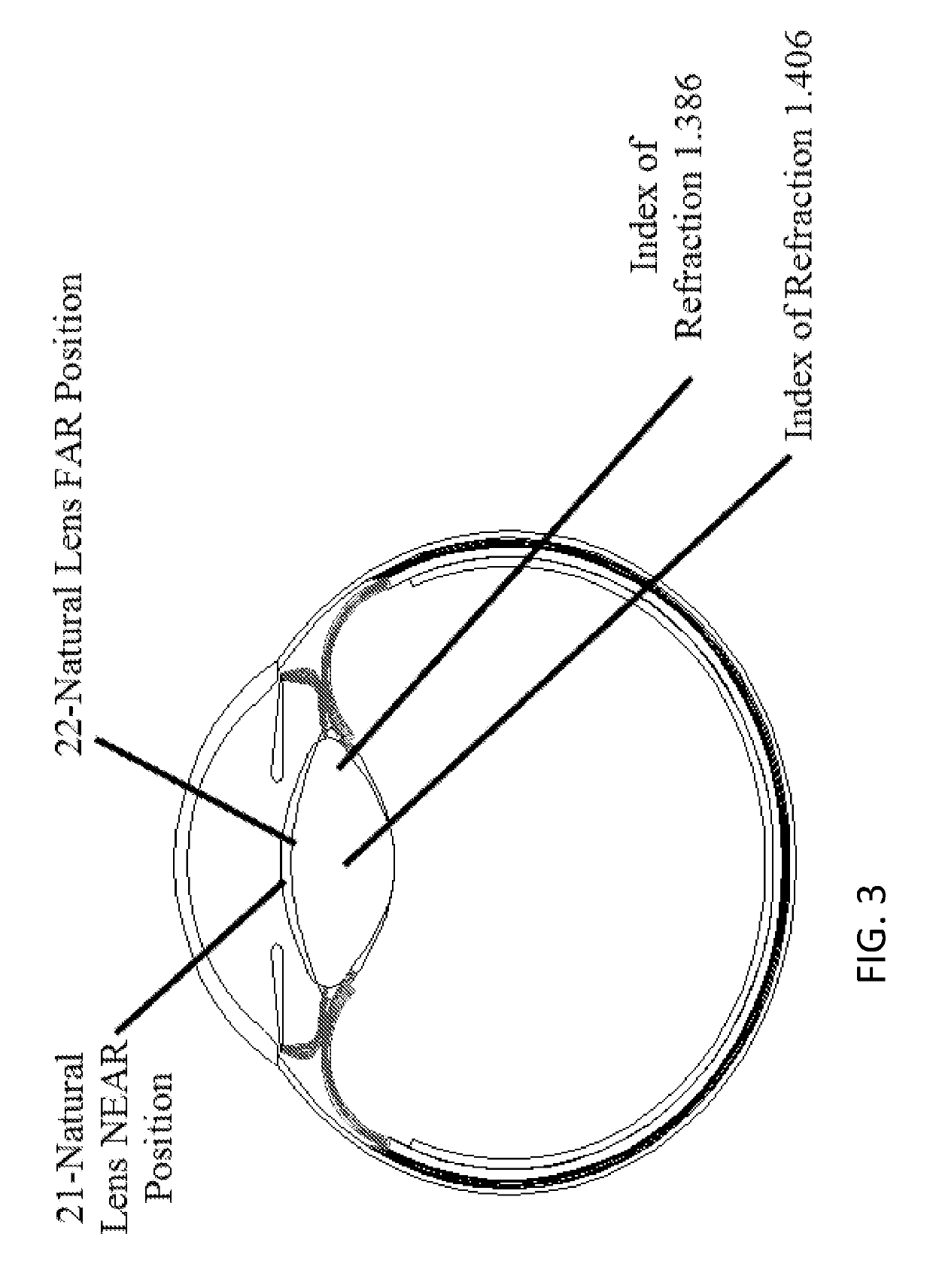Accommodative intraocular lens that ejects post capsular opacification and self-centers
a technology of intraocular lens and haptic, which is applied in the field of accommodating intraocular lens having a haptic, can solve the problems of brittle hydrophilic materials and loss of potential accommodation, and achieve the effect of reducing potential warpage of optics
- Summary
- Abstract
- Description
- Claims
- Application Information
AI Technical Summary
Benefits of technology
Problems solved by technology
Method used
Image
Examples
Embodiment Construction
[0095]Reference will now be made in detail to various exemplary embodiments of the invention. It is to be understood that the following discussion of exemplary embodiments is not intended as a limitation on the invention. Rather, the following discussion is provided to give the reader a more detailed understanding of certain aspects and features of the invention.
[0096]Unless otherwise noted, definitions for ocular terminology included in this specification can be found in the Dictionary of Eye Terminology by Barbara Cassin and Melvin L. Rubin (ISBN 0-937404-44-6); Merriam Webster's Medical Dictionary (ISBN 0-87779-914-8); or American Heritage College Dictionary Fourth Addition (ISBN-13; 978-0-618-8359-9 ISBN-10; 0-618-83595-4). Other references that may provide background to the invention include Fundamentals of Optics—by Francis Jenkins & Harvey E. White (ISBN 0-07-032330-3) and Optical Engineering Fundamentals by Bruce H. Walker (ISBN-13: 978-0819475404; ISBN-10: 0819475408). Each...
PUM
 Login to View More
Login to View More Abstract
Description
Claims
Application Information
 Login to View More
Login to View More - R&D
- Intellectual Property
- Life Sciences
- Materials
- Tech Scout
- Unparalleled Data Quality
- Higher Quality Content
- 60% Fewer Hallucinations
Browse by: Latest US Patents, China's latest patents, Technical Efficacy Thesaurus, Application Domain, Technology Topic, Popular Technical Reports.
© 2025 PatSnap. All rights reserved.Legal|Privacy policy|Modern Slavery Act Transparency Statement|Sitemap|About US| Contact US: help@patsnap.com



